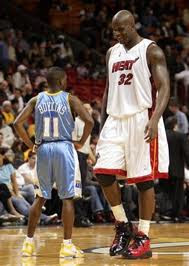 When your company is a startup, ie extremely innovative, potentially disruptive and absolutely money deprived, getting noticed on your market is key. And PR appears to be the most obvious and the fastest way to reach this objective. So they say. But when, what, how and with who should you start? Here are some key steps to those meaningful questions.
When your company is a startup, ie extremely innovative, potentially disruptive and absolutely money deprived, getting noticed on your market is key. And PR appears to be the most obvious and the fastest way to reach this objective. So they say. But when, what, how and with who should you start? Here are some key steps to those meaningful questions.Getting noticed isn't that easy on crowded markets and the first main issue for startups is double: a) there are many other exciting startups trying to grab the media's attention b) the David vs. Goliath syndrome makes it even more difficult for your voice to be heard when your market's incumbents have entire hordes of communication experts discussing on a daily basis with key editors.
Keep in mind that as a startup your company has inner strengths that you should leverage: more agile and faster to react, to name a few. So let's start with the obvious.
Define your objectives. Sounds obvious, right? Well, not that obvious, actually. Whatever you are aiming at, wether BusinessWeek's front cover (the Iron-Man syndrome) or increasing your website's traffic or recruiting rock-star engineers, implies specific media, a specific timeline, and specific journalists to target.
Positioning you company on its market is only a matter of being smarter: leverage the work that has been done by other actors of the market.
1 – observe and acquire the incumbents' lexicon: as journalists know it – being so regularly in touch with their communication hordes – they'll understand right away where to position you.
2 – observe and react to major statements / announcements: write a tribune, post it on you blog and link it to the announcement, comment on the initial announcement and link to your post. You can even propose your tribune to editors. They want to give their readers the big picture and a comprehensive presentation of it: you can benefit from this. Few tribunes of the kind will de facto position you and your company on your market.
3 – keep your communication flowing: schedule your announcements to make sure you'll be communicating a least once every 6 weeks.
4 – iterate.
Logistics is key in the communication field. Make your announcements easy to access to editors some of whom receive over 200 emails a day... ban email attachments and favor links to the resources attached to your announcement (pictures, videos, screencasts etc.)
It's human, baby! Build a relationship with the editors you discuss with. Don't hesitate to give them some unofficial information using the sacred “this is off, but...”. The “off” brings both parts many advantages, the main one being it gives perspectives to the editor writing on you. Even if some of the information cannot be used in his/her first article, it'll enable him/her to get back to you on other articles and it'll enable you to get back to him/her later when this information becomes official.
Leverage social media. Social media and online communication have brought many new ways to communicate and to get to the exact person you want to talk to. Spend time on forums, blogs, Twitter, Facebook, Linkedin etc. and find the appropriate and professional way to get your messages across.
2 – observe and react to major statements / announcements: write a tribune, post it on you blog and link it to the announcement, comment on the initial announcement and link to your post. You can even propose your tribune to editors. They want to give their readers the big picture and a comprehensive presentation of it: you can benefit from this. Few tribunes of the kind will de facto position you and your company on your market.
3 – keep your communication flowing: schedule your announcements to make sure you'll be communicating a least once every 6 weeks.
4 – iterate.
Logistics is key in the communication field. Make your announcements easy to access to editors some of whom receive over 200 emails a day... ban email attachments and favor links to the resources attached to your announcement (pictures, videos, screencasts etc.)
It's human, baby! Build a relationship with the editors you discuss with. Don't hesitate to give them some unofficial information using the sacred “this is off, but...”. The “off” brings both parts many advantages, the main one being it gives perspectives to the editor writing on you. Even if some of the information cannot be used in his/her first article, it'll enable him/her to get back to you on other articles and it'll enable you to get back to him/her later when this information becomes official.
Leverage social media. Social media and online communication have brought many new ways to communicate and to get to the exact person you want to talk to. Spend time on forums, blogs, Twitter, Facebook, Linkedin etc. and find the appropriate and professional way to get your messages across.
Here are the slides of the presentation I give to Startups. What do you think? Any other hints to share?
PR for Startups: when, what, how?
View more presentations from Anne de Forsan.




